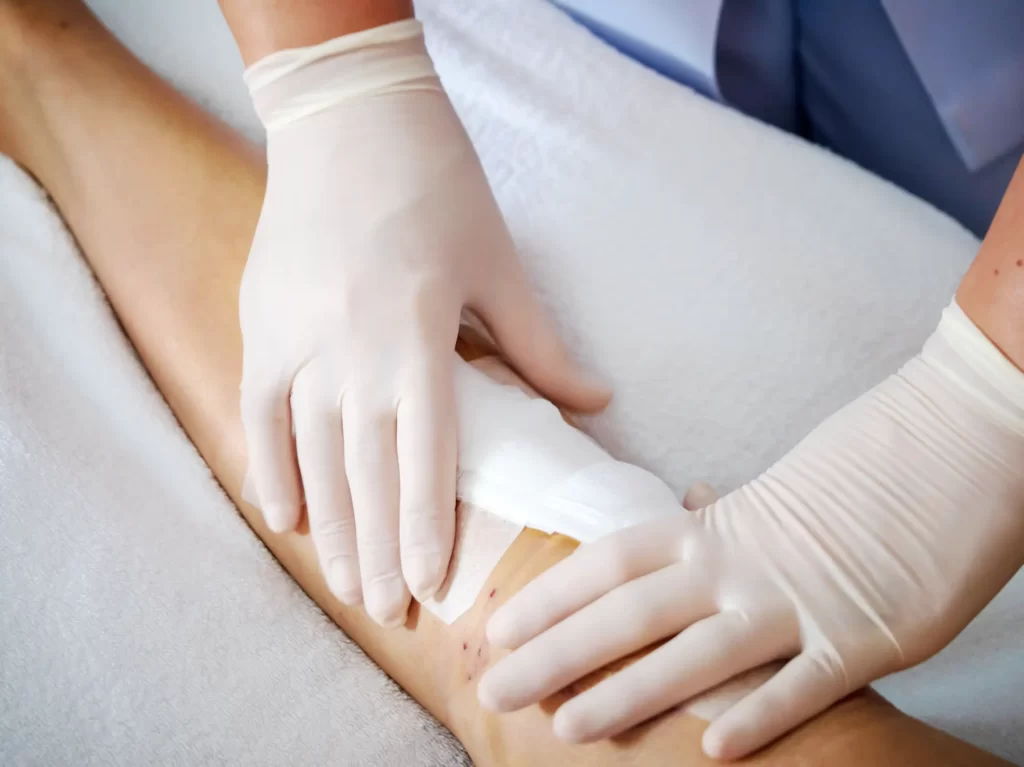Wound Treatments
Stages of Wound Treatment
Wound treatment involves a range of medical practices aimed at promoting the healing of wounds and preventing complications. Including cleaning, debridement, removal of biofilm or debris, dressing selection, infection control, pain evaluation, moisture balance, supportive therapies, nutrition, education, and regular follow ups for progression of the wound.

- Purpose: To remove necrotic (dead) tissue, slough, biofilm or debris, which can impede healing and harbor bacteria.
- Methods: Autolytic Debridement: Uses the body's own enzymes and moisture to rehydrate, soften, and liquefy necrotic tissue.
- Enzymatic Debridement: Application of topical agents that dissolve dead tissue.
- Mechanical Debridement: Physical removal of tissue using tools like gauze or special pads.
- Surgical Debridement: Sharp removal of tissue by a healthcare professional using instruments like scalpels or scissors.
- Biological Debridement: Use of maggots that consume dead tissue without harming healthy tissue.
- Purpose: To protect the wound, maintain a moist environment, and absorb exudate.
- Types:
- Hydrocolloid Dressings: Gel-forming agents in an adhesive compound laminated onto a flexible, water-resistant outer layer.
- Foam Dressings: Absorb exudate while maintaining a moist wound environment.
- Alginate Dressings: Highly absorbent, made from seaweed, used for wounds with significant exudate.
- Hydrogel Dressings: Provide moisture to dry wounds and facilitate autolytic debridement.
- Transparent Films: Thin, flexible sheets of clear polyurethane, used for superficial wounds with minimal exudate.
- Antibiotics: Topical or systemic antibiotics are used if there is a confirmed infection.
- Antimicrobial Dressings: Dressings impregnated with agents like silver or iodine to reduce bacterial load.
- Analgesics: Oral or topical medications to relieve pain.
- Pain-Reducing Dressings: Products that minimize dressing change pain, such as silicone-based dressings.
Maintaining Optimal Moisture: Ensuring the wound is not too dry or too wet. Dressings are selected based on their moisture-retentive or moisture-absorptive properties.
- Compression Therapy: For venous leg ulcers, using compression bandages or stockings to improve blood flow.
- Negative Pressure Wound Therapy (NPWT): A vacuum dressing to promote healing in acute or chronic wounds by applying controlled suction.
- Ensuring Adequate Nutrition: Proper nutrition is critical for wound healing. Protein, vitamins (especially Vitamin C and E), and minerals (like zinc) play important roles.
- Hyperbaric Oxygen Therapy (HBOT): Breathing pure oxygen in a pressurized room or chamber to enhance the body's natural healing process.
- Growth Factors and Skin Substitutes: Application of biologically active substances or engineered tissue products to stimulate healing.
- Self-Care Instructions: Teaching patients how to care for their wounds at home, including how to change dressings and recognize signs of infection.
- Lifestyle Modifications: Advising on changes that can promote healing, such as smoking cessation and weight management.
- Regular Assessments: Frequent monitoring of the wound to assess healing progress and adjust treatment as necessary.
- Documentation: Keeping detailed records of the wound’s characteristics and the treatment provided.
